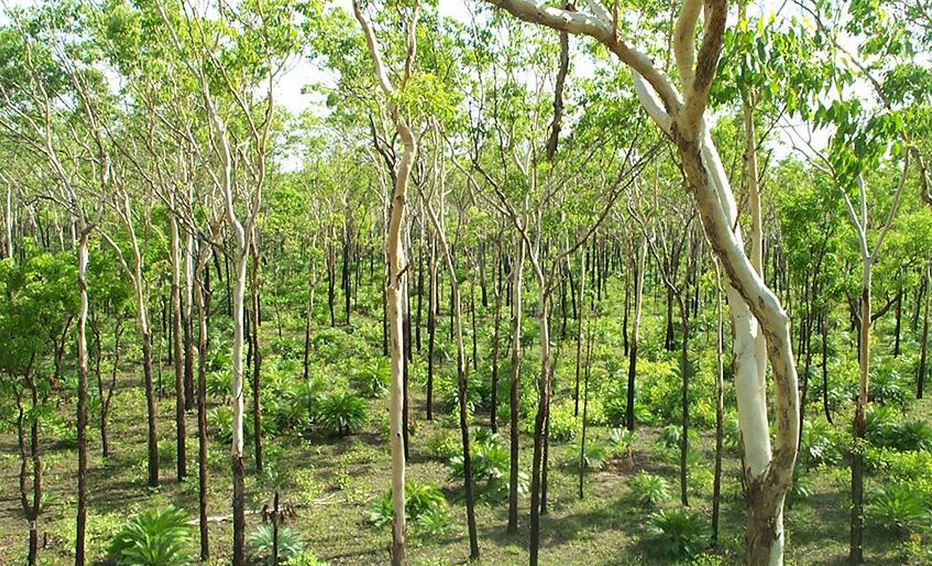Since 2003, the Earth has become greener, despite considerable losses from the Amazon and Indonesian rainforests, an Australian-led study has shown. The amount of global vegetation has risen by almost the equivalent of 4 billion tonnes of carbon compared to twelve years ago.
The researchers, who carried out an analysis of 20 years of satellite data, published their findings in the academic journal Nature Climate Change (citation below), explaining that the increase is the result of several factors.
Lead author, Dr. Yi Liu, a remote-sensing scientists at the University of New South Wales’ Centre of Excellence for Climate System Science, said:
“The increase in vegetation primarily came from a lucky combination of environmental and economic factors and massive tree-planting projects in China.”

Mean annual change in above-ground biomass carbon between 1993 and 2012. (Image: Nature)
“Vegetation increased on the savannas in Australia, Africa and South America as a result of increasing rainfall, while in Russia and former Soviet republics we have seen the regrowth of forests on abandoned farmland.”
“China was the only country to intentionally increase its vegetation with tree planting projects.”
However, the scientists warn that in many other regions, vegetation loss has been “massive”. The greatest declines have been seen on the edge of the Amazon rainforests and the Indonesian provinces of Sumatra and Kalimantan.
New measurement technique
To obtain their results the scientists pioneered a new technique to map changes in vegetation biomass over time, using satellite measurements of natural radio waves emitted from the surface of the Earth.
Fellow lead author, Professor Albert van Dijk, of the Australian National University, said:
“With our approach we found unexpectedly large vegetation increases in the savannas of southern Africa and northern Australia. The increase in Australia occurred despite ongoing land clearing, urbanization and big droughts across other parts of Australia.”
The growth in greening means the amount of carbon captured by vegetation in Australia has risen.
Greater rainfall helped
The strong growth over the savannas came primarily from heavier rainfall, particularly in recent years. Higher CO2 levels may also have helped plants grow there more vigorously.
However, any prolonged period of drought in the savannas could rapidly reverse everything, co-author Dr. Pep Canadell, Director of the Carbon Project, said.

Green savanna from tree height. (Image: CSIRO Science Images)
Dr Canadell added:
“This study shows this capture of carbon is very sensitive to year-to-year changes in rainfall over savanna regions, both for Australia and for the global CO2 budget.”
“It’s important to recognize that global warming would be happening faster if some of our CO2 emissions were not captured by this vegetation growth.”
Despite this good news about nature helping regulate our planet’s climate, Dr. Canadell stressed there was still only one way to reduce the impacts of global warming.
“We know about 50% of emissions from human activities stay in the atmosphere even after the other half is removed by terrestrial vegetation and oceans. The only way to stabilise the climate system is to reduce global fossil fuel emissions to zero,” he said.
Citation: “Recent reversal in loss of global terrestrial biomass,” Yi Y. Liu, Albert I. J. M. van Dijk, Richard A. M. de Jeu, Josep G. Canadell, Matthew F. McCabe, Jason P. Evans & Guojie Wang. Nature Climate Change. Published 30 March, 2015. DOI: 10.1038/nclimate2581.
